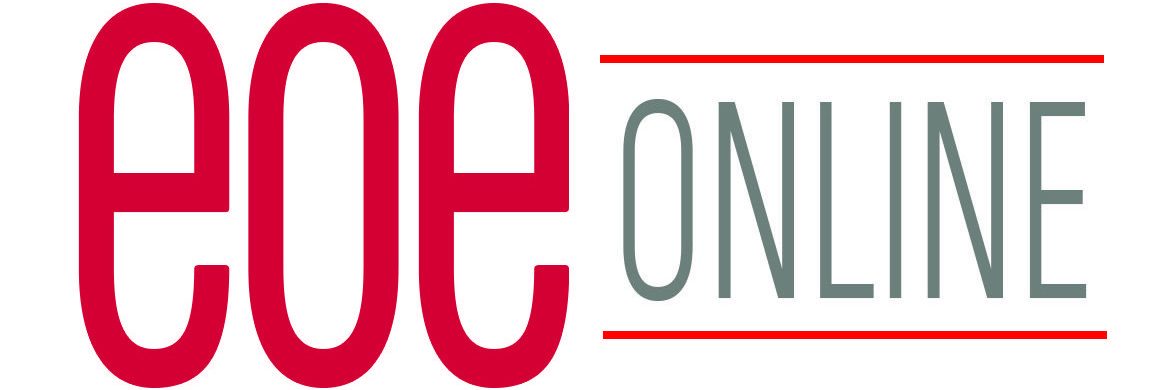
The legacy of the Americans with Disabilities Act (ADA), at least in part, can be reflected back to us in the Millennials – an entire generation that has grown up with and benefited from the landmark law. In all that time (25 years), however, the employment opportunity for Americans with disabilities has changed little. America must get people with disabilities participating in the economic mainstream. But will business embrace hiring people with disabilities?
The answer is yes – absolutely. And here’s why.
Reason 1: People with disabilities represent a talented, untapped labor market.
In 2013, an estimated 70.7 percent of working-age adults were employed in the United States. By comparison, less than 30 percent of working-age Americans with disabilities participated in the workforce (Bureau of Labor Statistics, 2014). Americans households with an adult member with a disability earned 38 percent less in 2012 – or, an estimated $37,300 in household income compared to $60,600 – than households without an adult member with a disability (Cornell University, 2014). Working-age adults with particular disabilities, such as developmental disabilities, fare worse. More than eight out of 10 working-age adults with developmental disabilities do not have a paid job in the community. People with disabilities constitute the nation’s largest minority group and its highest level of unemployment. Senator Tom Harkin, in his final speech from the floor of the U.S. Senate, noted this disparity, saying “we must do more on employment of people with disabilities” (Nonprofit Quarterly, 2014).
This group’s notable absence from our collective workplace is troubling but also holds promise. People with disabilities represent a huge, talented and untapped labor market. Salon.com has said they “may be the best workers no one’s hiring,” except that more and more businesses are hiring people with disabilities – and gaining a competitive edge. Germany software company SAP’s new Autism at Work program calls is “a skill play” (Disability Scoop, 2014).
So says a 2013 blueprint by Delaware governor Jack Markell, 2012-13 chair of the National Governors Association, which suggests that governors can respond to skilled workforce concerns by introducing businesses “to an often-ignored talent pool”: people with disabilities. The blueprint goes on to say that “individuals with disabilities are a valuable asset for business,” with businesses reporting such “positive outcomes” as productivity increases and “a workforce that reflects their consumer base.” The blueprint notes the particular success of Walgreens, for which distribution center employees with disabilities represent between one-third and more than 50 percent of its workforce. Studies of the Walgreens experience demonstrate “a 120 percent productivity increase,” declines in absenteeism, less turnover, and improved safety.
Other employers, such as Google, refers to workplace diversity as a “science of inclusion” that “makes [them] a better company” with better products for all of their consumers. A workplace inclusive of people with disabilities better positions business not only to represent and respond to consumer preferences, but also to leverage new, untapped skills and talents and gain an edge on the competition.
Reason 2: Hiring people with disabilities improves corporate culture.
Hiring people with disabilities doesn’t just improve the talent pool at the office – it also improves the office culture. A recent study by the Institute for Corporate Productivity (i4cp), which surveys and analyzes the practices of high-performing businesses, found that one of the reasons employers proactively hire people with disabilities is that it supports their corporate culture. As the report states, this positive impact “is brought about in two ways: [it] adds highly motivated people to the workforce (which can lead to increased productivity) and it promotes an inclusive culture that appeals to the talent pool organizations want to attract.” That’s a win-win!
Reason 3: It also benefits the bottom line.
When i4cp conducted their recent survey, they targeted high-performing businesses, or businesses with impressive market share, revenue growth, profitability and customer satisfaction. Part of the data they looked at was how diversity and inclusion (D&I) practices impacted the bottom line. What they found isn’t surprising to those of us that think about D&I on a regular basis: high-performing businesses are twice as likely as low-performing ones to emphasize D&I as a matter of policy, and more than twice as likely to specifically include people with intellectual and developmental disabilities in those goals. Forty-three percent of respondents found that hiring people with disabilities “produce[d] measurable or observable business benefits.”
This finding is not unique. A recent Best Practices guide by the U.S. Business Leadership Network (USBLN) suggests that “[s]uccessful businesses recognize that incorporating disability in all D&I practices positively impacts their companies’ bottom line.” The guide features examples from companies such as 3M, PepsiCo, and Merck among others of the benefits and importance of hiring people with disabilities.
And, there is more than survey or anecdotal evidence supporting this conclusion. A joint DePaul University-Illinois Department of Commerce and Economic Opportunity report, “Exploring the Bottom Line: A Study of the Costs and Benefits of Workers with Disabilities” (2007), conducted cost-benefit analysis using data from 13 companies, finding that the average cost of accommodating employees with disabilities – at $313 – was far less than the benefits, which included lower absenteeism and longer tenure. A U.S. Department of Labor Job Accommodation Network (JAN) report similarly suggests “workplace accommodations not only are low cost, but also positively impact the workplace in many ways.” In more than half of the cases examined, requested workplace accommodations had no cost (e.g., scheduling flexibility, teleworking, dress code allowances). The JAN report identified other benefits stemming from the accommodations: retaining valuable employees, improving productivity and morale, and reducing workers’ compensation and training costs, among others. The report also found that other accommodations had an average cost of $500.
Reason 4: It’s responsive to government guidelines and broader employment trends toward more inclusive workplaces.
The federal government has revised implementation guidelines for Sec. 503 of the Rehabilitation Act of 1973, changes that now require federal contractors to set an aspirational hiring target of 7 percent of people with disabilities. While this target only applies to contracts of $50,000 or more, with the significant role federal contractors play in the American workforce – representing 22 percent! – this regulatory revision is an important one.
Complimenting these targets is a new federal requirement for employers to collect information about the disability status of employees and job applicants. For years, businesses have hired without knowing whether an employee had a disability. Not knowing how many individuals with disabilities a business employs makes it harder, not only for them to report and show proactive hiring efforts, but also to take a proactive approach to accommodating their employees. It also makes it tough for businesses to do more to advance an inclusive workplace. And to prepare themselves to respond to a growing need to accommodate tenured and highly valued Baby Boom employees, who may incur disability as a part of the aging process (U.S. Census Bureau, 2014).
Plus, as touched on early, these same trends will be co-occurring across the consumer community. Businesses that hire people with disabilities will create more diverse workforces that better reflect their customers, respond to changing consumer preferences, and help them to enter new markets. It’s not just about being responsive to government guidelines; it about business being response to broader trends pushing toward workplace inclusion.
Reason 5: Finding talented people with disabilities is getting easier all the time.
Times have changed. New technologies and new ways of doing business mean that people with disabilities can be a vital part of today’s workforce with no-cost or low-cost accommodations. Text-to-speech technology, such as Dragon and Siri for iPhones and iPads, are commonplace and relatively inexpensive. The same is true for teleworking: often used to accommodate work-life balance, it also accommodates people with issues related to transportation.
Increasingly, the non-profit sector and businesses are teaming up on innovative projects to help build workplaces that value the role that disability plays in the workplace and market-place. The Disability Equality Index (DEI) is the result of one such partnership, between the USBLN and the American Association of People with Disabilities.
The DEI helps businesses that are seeking ways to enhance their diversity efforts around disability inclusion. While the private sector is identifying methods to truly integrate disability into overall diversity strategy, there remains a need for a universal disability inclusion index that is objective, evaluative, reflective and forward-thinking in a way that helps business reach the next level. The DEI is a forward-thinking tool that empowers and encourages companies to become industry leaders.
Where do we go from here?
Though a lot has changed in the two-decades-plus since the ADA, there is still more to be done when it comes to employing people with disabilities. Government is leading by example, setting the bar for itself and its contractors toward a more inclusive workforce. It’s also giving business new tools, like the revised Section 503 requirements. Business, for its part, is partnering with nongovernmental organizations and other stakeholders in increasingly innovative ways. The DEI is just one example, but there are countless others.
We need more of these examples – more initiatives like those of the DEI, closer partnership between the public and the private sectors, and greater openness to new ways of doing business. There’s a lot riding on this: realizing the potential people with disabilities represent in the American workforce, which is good for business and the rest of us.
by the American Association of People with Disabilities (AAPD)
